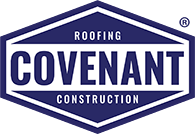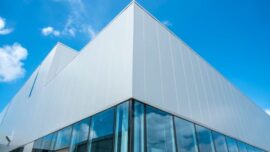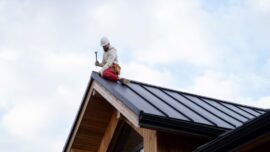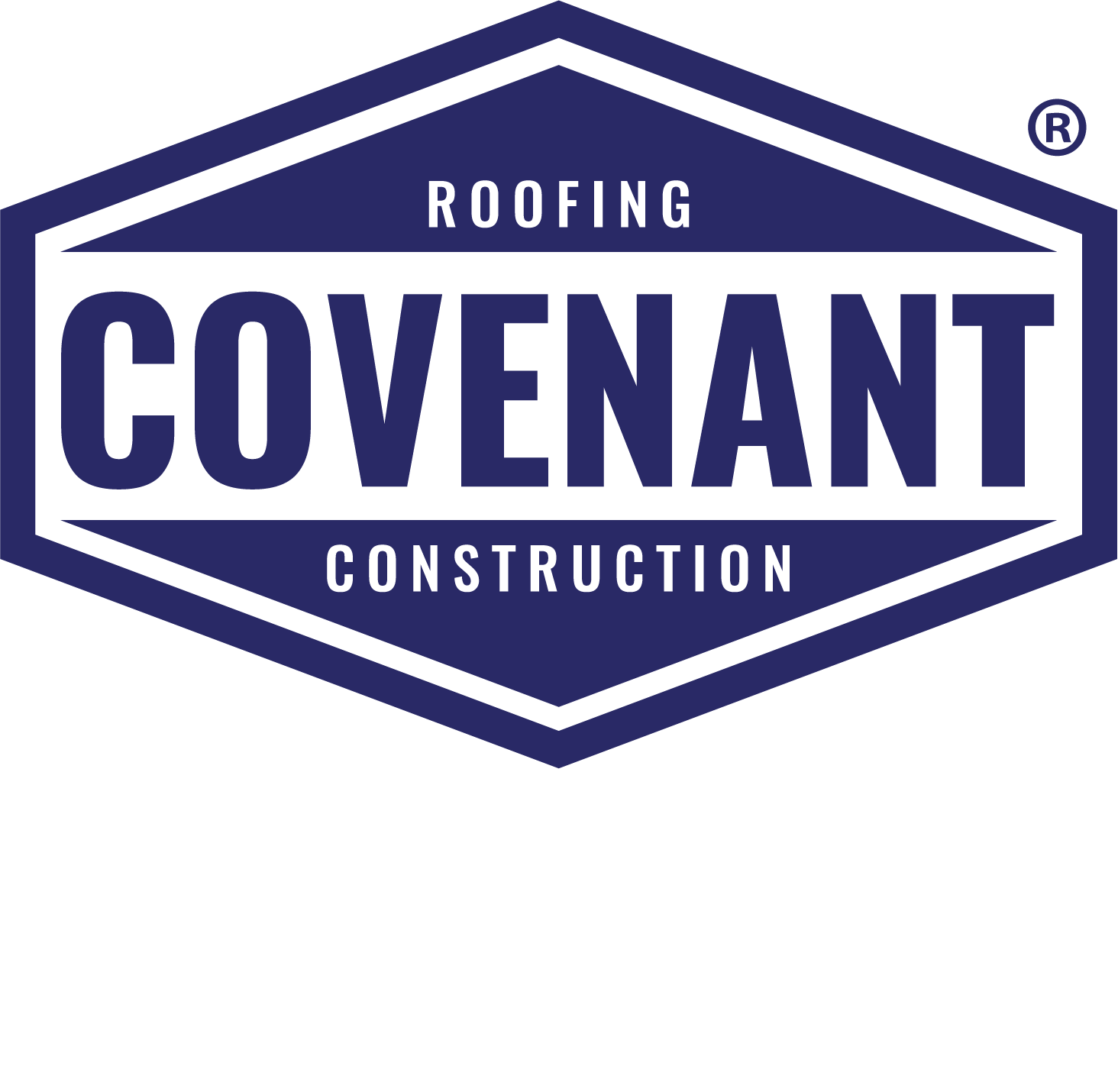
Extending the Lifespan of Your Roof with a Residential Roofer
Whether you’re a first-timer or an old-timer homeowner, you want your roof to last as long as possible. Your roof’s structural integrity and visual appeal must be kept in good condition. Residential roofers play a pivotal role in extending the lifespan of your roof.
In this blog, we’ll explore the significance of a well-maintained roof and why entrusting it to the capable hands of a residential roofer is a wise decision. From enhancing durability to tackling repairs, we’ll uncover the secrets to a lasting and worry-free roof. So, cozy up as we go into detail that will help increase your roof’s longevity and keep it looking fantastic for years.
Signs of Roof Aging and Damage
As a responsible homeowner, recognizing common signs of roof wear and tear is crucial in preserving your home. Look for red flags like leaks and water damage, often manifest as discolored ceilings or damp spots.
Missing or damaged shingles are another telltale sign, leaving your roof vulnerable to the elements. Don’t overlook sagging or uneven areas, as these can indicate structural issues. Spotting these signs allows for timely repairs, ensuring your roof’s longevity and peace of mind.
Leaks and water damage
Water damage is a homeowner’s nightmare, but spotting the signs early can save you from costly repairs. Early detection and addressing these issues promptly are vital to safeguard your home and its structural integrity.
- Stained Ceilings — Discolored patches on your ceiling are often a telltale sign of water leaking through the roof or plumbing.
- Damp Walls —- If your walls feel persistently cold or damp, moisture might be seeping through from the outside.
- Peeling Paint or Wallpaper — Bubbling or peeling paint and wallpaper can suggest underlying water damage, even if the source isn’t immediately visible.
- Musty Odors — A musty, moldy smell is often the first sign of hidden water damage, leading to serious health issues if left unaddressed.
Missing or damaged shingles
Missing or damaged shingles are not just cosmetic issues; they can compromise your roof’s integrity and lead to more extensive problems. Regular inspections and maintenance can help you catch these issues before they escalate into major headaches.
Keep an eye out for these red flags:
- Bald Spots — If you notice shiny or smooth areas on your shingles, they’ve likely lost their protective granules, making them vulnerable to weather damage.
- Curling or Buckling Shingles — Shingles that appear warped or raised are susceptible to wind and water damage.
- Cracks or Breaks — Cracked or broken shingles can allow water to infiltrate and damage your roof’s underlying structure.
- Visible Gaps — Gaps between shingles can expose your roof to moisture and lead to leaks or rot.
Sagging or uneven areas
Sagging or uneven areas on your roof are clear signals that something is amiss and should never be ignored. These structural issues can lead to more significant problems if left unchecked. Your roof should have an immediate inspection by a professional to maintain your home’s structural integrity and prevent more costly repairs down the road.
- Dips in the Roof — If you notice depressions or dips on the surface of your roof, it could be a sign of underlying structural problems.
- Sagging Roof Lines — A noticeable sag in your roof’s lines, whether in the center or along the eaves, is a cause for concern and may indicate weakened support.
- Warped or Bowing Roof Deck — A warped or bowing roof deck, typically observed from your attic, can be a telltale sign of structural issues, possibly related to excessive weight or water damage.
Granule loss from shingles
Granule loss from shingles is a common issue that can compromise the effectiveness of your roof. Those tiny, sand-like particles on shingles serve a crucial purpose: protecting them from UV rays and harsh weather. When these granules start to wear away, it’s a sign of shingle aging and vulnerability. Regular roof inspections and timely maintenance are essential to catch granule loss early and ensure your roof remains a reliable shield against the elements.
The Impact of Weather Conditions on Your Roof
Weather conditions can be your roof’s best friend or its worst enemy. Understanding their impact is crucial for protecting your home. Regular roof inspections and timely maintenance can help combat the impact of weather conditions, ensuring your roof remains a steadfast shield against the elements.
Here’s how weather conditions affect your roof:
Rain and Moisture
Prolonged exposure to rain can lead to leaks, water damage, and rot if your roof’s drainage system isn’t functioning properly.
Sun and UV Rays
Intense sunlight and UV rays can cause shingle deterioration and weaken their protective layers, leading to granule loss and a reduced lifespan.
Wind and Storms
Strong winds and storms can lift shingles, causing them to break or go missing, leaving your roof susceptible to water infiltration.
Snow and Ice
The weight of snow and ice can strain your roof’s structure, potentially causing sagging or even collapse in extreme cases. Ice dams can also form, leading to water seepage.
Regular Roof Inspections
Regular roof inspections are the unsung heroes of homeownership, ensuring your shelter remains a safe haven. To protect your investment, it’s crucial to understand the significance of proactive roof inspections. Experts recommend annual inspections, especially in the fall, to catch and address issues before harsh winter weather arrives. After severe storms or weather events, additional checks are wise.
Exterior Assessment
They start by examining the roof’s exterior, looking for signs of damage, such as missing or damaged shingles, granule loss, and sagging areas.
Flashing Inspection
They closely inspect flashing around chimneys, vents, and skylights, ensuring they’re intact and well-sealed.
Gutter Examination
Gutters play a vital role in water drainage. A residential roofer checks for clogs and damage that might affect the roof.
Attic and Interior Assessment
They examine the attic for signs of moisture, mold, or insulation problems, as these can indicate roof issues.
Detailed Documentation
A thorough residential roofer provides you with a detailed report, including photos and recommended repairs, ensuring transparency and understanding.
Routine Roof Maintenance
Maintaining your roof goes beyond inspections; regular cleaning and debris removal are equally essential. Regular cleaning and maintenance help extend your roof’s lifespan and ensure it continues to protect your home from the elements. Here’s how to ensure your roof remains in top-notch condition:
Clearing Gutters and Downspouts
Clogged gutters and downspouts can cause water to pool on your roof, leading to leaks and structural damage. Regular cleaning is vital to ensure proper water drainage.
Replacing Damaged or Missing Shingles
Missing or damaged shingles are your roof’s weak spots, making it susceptible to water intrusion. Swift replacement is key to preserving your roof’s integrity.
Sealing Cracks and Gaps
Weather and time can create cracks and gaps in your roof, allowing moisture to seep in. Sealing these openings prevents leaks and maintains insulation.
Addressing Ventilation and Insulation Issues
Proper ventilation and insulation are vital for a healthy roof. Improper airflow can lead to mold growth, while inadequate insulation can affect energy efficiency.
Roof Repair and Restoration
Repairing minor damages on your roof promptly can save you from more extensive, costly problems down the line. Roof restoration techniques are the key to ensuring your shelter remains sturdy and secure. When performed by a professional residential roofer, roof restoration offers several benefits:
Cost-Effective
Restoration is typically more affordable than a full roof replacement.
Extended Lifespan
Prolong the life of your existing roof.
Energy Efficiency
Improves insulation and energy efficiency.
Environmental Sustainability
Reduces waste and landfill impact compared to roof replacement.
Here are DIY restoration techniques and tips you can apply to your roof. It is also an excellent alternative to replacement, preserving your roof’s functionality and aesthetics while saving you money.
Shingle Replacement
Replacing missing or damaged shingles to prevent leaks and water damage.
Sealing and Caulking
Addressing cracks and gaps in the roof’s structure to prevent moisture infiltration.
Moss and Algae Treatment
Cleaning and treating your roof to prevent organic growth that can damage shingles.
Flashing Repair
Fixing or replacing damaged flashing around roof penetrations to prevent water entry.
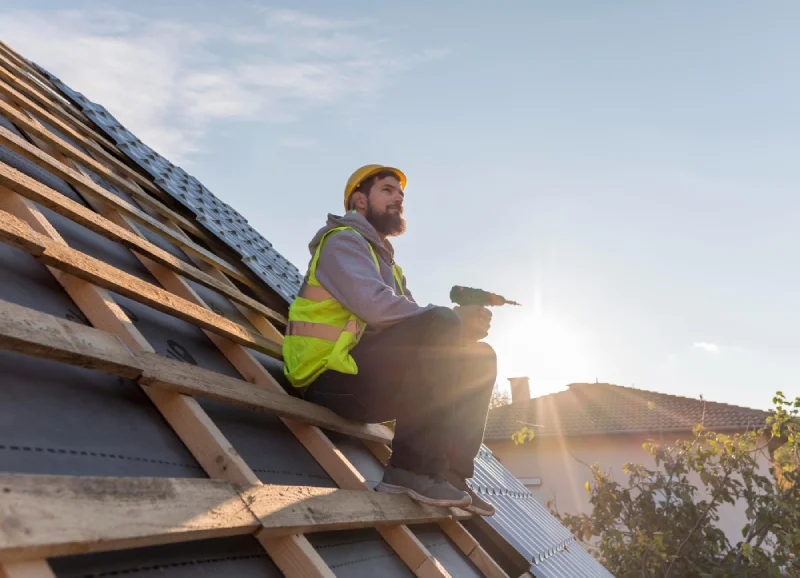
Quality Roofing Materials and Installation
High-quality roofing materials are a fundamental investment in your home’s long-term protection. To ensure the longevity and performance of your roof, it’s crucial to understand the significance of premium materials and proper installation.
Roofers carefully choose durable, weather-resistant materials suited to your specific climate and needs. They prepare the roof’s surface, ensuring it’s debris-free and addressing any structural issues. Roofers follow manufacturer guidelines to install materials with precision and care.
With the expertise of a residential roofer, you can achieve both a more energy-efficient home and a roof that stands the test of time. Proper installation extends a roof’s lifespan and offers several benefits, including:
- Enhanced Durability — High-quality materials and installation reduce the risk of leaks and damage.
- Energy Efficiency — A well-installed roof improves insulation, reducing heating and cooling costs.
- Aesthetics — Proper installation enhances your home’s curb appeal, adding value.
- Longevity — Quality materials and installation methods extend the roof’s lifespan, providing lasting protection for your home.
Roofing Insulation and Ventilation
Insulation plays a pivotal role in both energy efficiency and the longevity of your roof. When it comes to maintaining a comfortable home and safeguarding your shelter, it’s essential to understand how insulation and proper ventilation work hand in hand.
Proper insulation regulates indoor temperatures, prevents energy loss, and reduces strain on your heating and cooling systems. This translates to lower energy bills and a reduced carbon footprint. Moreover, insulation also contributes to your roof’s longevity by preventing temperature-related damage.
Quality Material Selection
Residential roofers select insulation materials that offer the best thermal performance for your climate, ensuring optimal energy efficiency.
Installation Precision
They install insulation evenly and with attention to detail, eliminating gaps and weak spots.
Ventilation Expertise
Residential roofers assess your attic’s ventilation needs and implement a proper ventilation system, preventing moisture buildup that can compromise insulation and roofing materials.
Storm Damage and Emergency Repairs
After a severe storm, seeking a professional assessment of your roof is paramount for your home’s and its occupants’ safety. Temporary fixes like tarping or sealing may be necessary to prevent further damage before a full repair. However, permanent repairs should always follow, as temporary solutions are not long-term fixes.
A professional assessment provides a comprehensive understanding of storm damage and ensures your roof is restored to its optimal condition. Here’s why it’s crucial to respond to storm damage on your roof effectively:
Safety First
Ensure everyone is safe, and only venture onto the roof if you’re confident it’s structurally sound.
Assessment
Conduct an initial inspection from the ground, looking for missing shingles, dented flashing, or visible damage.
Professional Evaluation
Have a certified residential roofer assess the damage to determine the extent and recommend the necessary repairs.
Document Everything
Take photos and document the damage for insurance claims and future reference.
Roof Coatings and Protective Treatments
Roof coatings and treatments offer various options for enhancing your roof’s performance and lifespan. They are a smart investment in roof longevity and overall cost-efficiency, making them a popular choice for homeowners. Here are the common coating types and benefits of roof coatings.
Reflective Coatings
These coatings reflect sunlight and heat, reducing energy consumption and preventing roof surface degradation. Reflective coatings can lower indoor temperatures, reducing the need for air conditioning and saving energy bills.
Waterproofing Coatings
Designed to repel water and prevent leaks, these coatings form a protective barrier against moisture infiltration. Coatings protect the roof from UV rays, moisture, and physical damage, extending its overall lifespan.
Sealant Coatings
Sealant coatings are excellent for filling gaps and preventing cracks, enhancing the roof’s durability and resistance to damage. By preventing damage and reducing energy consumption, roof coatings lead to cost savings in repairs and utility bills.
Sustainable Roofing Solutions
Eco-friendly roofing options are gaining popularity as homeowners seek sustainability and longevity. These environmentally conscious choices extend the lifespan of your roof while reducing your carbon footprint. For instance, a green roof covered in vegetation provides insulation, absorbs rainwater, and lowers energy consumption, thus extending the roof’s life.
Residential roofers play a crucial role in implementing these sustainable solutions. They assess your home’s needs, recommending and installing eco-friendly materials like cool roofs, solar panels, or recycled shingles. By embracing green roofing, not only do you reduce environmental impact, but you also ensure a roof that lasts longer, lowering maintenance costs and enhancing energy efficiency, all while contributing to a greener planet.
Choosing the Right Residential Roofer
Choosing a reputable residential roofer is crucial for the well-being of your home and peace of mind. You can confidently select a trustworthy roofer to provide quality service throughout your roofing project. To make an informed choice, consider these key qualities:
Multiple Quotes
Obtain quotes from multiple roofers to compare pricing, materials, and work schedules. This ensures you get a fair deal and a clear understanding of the project.
Licensing and Insurance
Verify that the residential roofer is licensed and fully insured. This protects you from potential liabilities and confirms the contractor’s credibility.
Local Reputation
A reputable roofer should have a solid local reputation. Check online reviews, ask for referrals, and seek feedback from neighbors to gauge their track record.
Clear Contracts
Look for detailed contracts that outline project scope, materials, timelines, and payment schedules. A transparent agreement ensures both parties are on the same page.
Residential Roofer FAQs
What is the proper name for a roofer?
The proper name for a roofer is typically a “roofing contractor” or simply a “roofing professional.” These experts are responsible for installing, maintaining, and repairing roofs on residential and commercial buildings.
What is the definition of a roofer?
A roofer is a skilled tradesperson specializing in constructing, repairing, and maintaining roofs. Their work includes installing roofing materials, ensuring proper ventilation and insulation, as well as addressing issues like leaks, damaged shingles, or structural problems.
Why hire a local roofer?
Hiring a local roofer offers several benefits, including familiarity with local building codes and climate conditions. They are more accessible for follow-up inspections and warranty work, and their local reputation can be easily verified through referrals and reviews.
What is the meaning of roof repair?
Roof repair refers to fixing any damage, wear, and tear, or issues that compromise the integrity of a roof. It can involve patching leaks, replacing damaged shingles, addressing structural problems, or sealing gaps and cracks to maintain the roof’s functionality.
How to repair a damaged roof?
Repairing a damaged roof involves a series of steps. Identifying the source of the damage. Gathering necessary materials and safety equipment. Safely accessing the roof. Making the required repairs, such as replacing shingles or sealing gaps. Ensuring proper ventilation and insulation. Conducting post-repair inspections to confirm the issue is resolved.
Conclusion
Regular maintenance and professional assistance are your best allies for safeguarding your home. By extending your roof’s lifespan through a residential roofer’s expertise, you enjoy peace of mind and long-term cost savings. For all your roofing needs, we’re here to help. Contact us today to ensure your shelter remains a sturdy and reliable haven for years.
